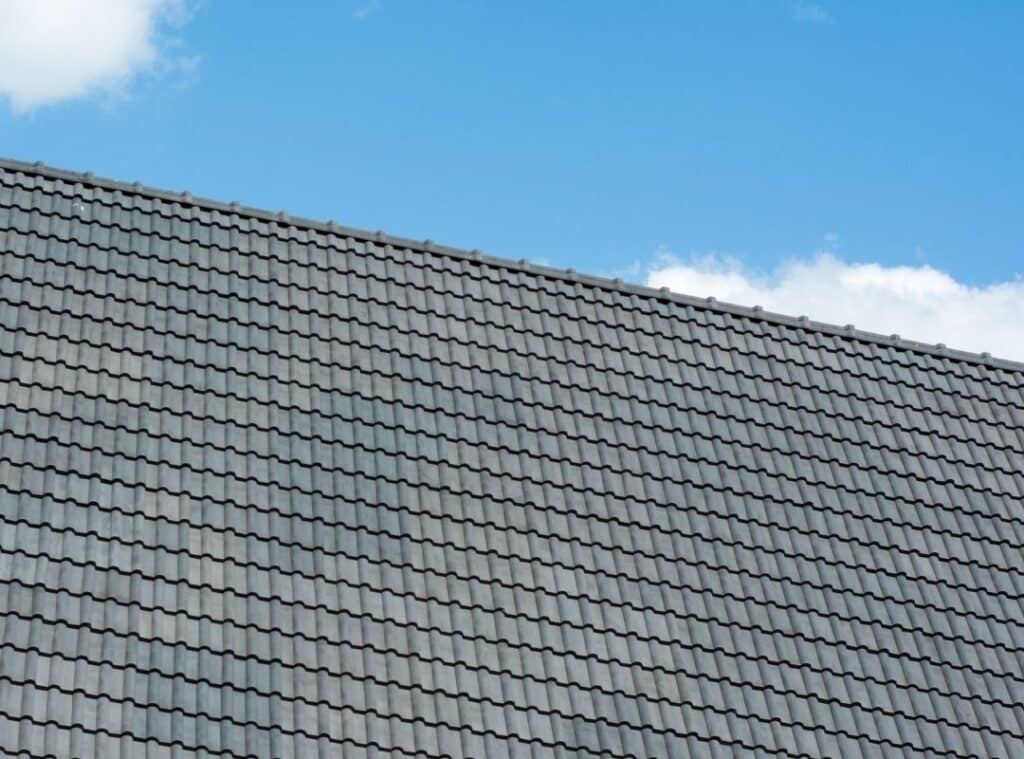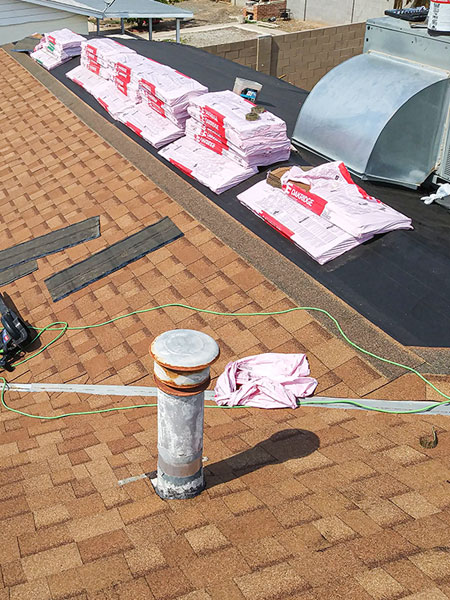When it’s time to replace your roof, the sheer number of options can be overwhelming. From traditional materials like asphalt shingles and wood shakes to more modern alternatives such as synthetic products and living roofs, there’s a roofing material out there that’s perfect for your home. You just have to know what you’re looking for.
In this article, we’ll explore six different roofing materials you should consider for your next roof. We’ll discuss their benefits, drawbacks, and suitability for various climates and architectural styles. So whether you’re planning a new build or giving an old roof some much needed TLC, read on to discover which roofing material might be the right choice for you!
An Overview of Asphalt Shingles
There’s no denying it, asphalt shingles have a charm that’s hard to resist, and they might just be the perfect fit for your home’s next roof. They’re not only aesthetically pleasing but also offer an impressive shingle lifespan, often lasting between 15 to 30 years depending on their quality and maintenance. The longevity of asphalt shingles is largely due to the advanced manufacturing techniques used today, which ensure they can withstand harsh weather conditions while still maintaining their beautiful finish.
Now let’s talk about installation techniques because this plays a crucial role in maximizing the lifespan of your asphalt shingles. You’ll be pleased to know that these roofing materials are relatively easy to install compared to other options out there. However, it’s essential that you hire experienced professionals who understand proper installation methods. This includes ensuring correct alignment and sufficient nailing for each shingle. If installed correctly and with good ventilation system in place, you’re looking at a reliable roof that will protect your home for many years!
The Benefits of Metal Roofs

Ever wonder about the advantages of a metal cover over your home? Well, one of the main benefits is its sheer longevity. Metal roofs can last 40-70 years, depending on the material. That’s two or three times longer than asphalt roofing! They are also highly resistant to weather conditions: rain, snow, high winds, even wildfires. You won’t have to worry about replacing your roof every few years with a metal option; it’s built to withstand time and nature.
In addition to its impressive lifespan, there’s another perk you’d appreciate: energy efficiency. A metal roof reflects solar radiant heat instead of absorbing it like other materials. This can reduce cooling costs by 10-25%, saving you a significant amount on utility bills in the long run. Now that’s what I call getting more bang for your buck! So when considering your next roofing material, don’t overlook the many benefits that come with choosing metal.
Understanding Wood Shingles and Shakes
Switching gears a bit, let’s delve into the world of wood shingles and shakes, which offer a unique blend of aesthetic appeal and practical benefits. These roofing materials give your home an organic look that can’t be matched by any other material. They provide excellent insulation for your house, keeping you warm in winter and cool in summer. However, they do require more maintenance compared to other roofing materials. Wood maintenance techniques such as regular cleaning to prevent mold and moss growth, sealing to protect against weather damage, and periodic inspections for decay or insect infestation are vital to maintain their longevity.
The shingle installation process also differs from that of metal or asphalt roofs. Usually made from cedar, redwood or pine trees, each shingle is carefully cut and then nailed onto the roof decking one at a time—a labor-intensive task that requires skilled craftsmanship. This method ensures that every piece fits perfectly together creating a tight seal against leaks while allowing the wood to expand and contract with changing temperatures without cracking or warping.
But remember! While it may be pricier upfront due to its meticulous installation process and required maintenance routine, the natural beauty of wood roofs often makes them worth the investment in many homeowners’ eyes.
The Durability of Slate Tiles
An embodiment of timeless elegance, slate tiles are renowned for their unparalleled durability, capable of standing strong against the harshest weather conditions and lasting up to a century or more. This roofing material is also exceptionally low maintenance, requiring very little in terms of slate maintenance beyond routine gutter cleaning and periodic inspections for broken or slipped tiles. Yet despite its impressive longevity and minimal upkeep requirements, it doesn’t skimp on aesthetic appeal. With an array of natural colors including grays, greens, purples, blacks and reds available to choose from, you can create a unique roof that perfectly complements your home’s exterior.
The color variety in slate tiles not only adds visual interest but also contributes to their high durability levels. Unlike other materials that fade over time due to exposure to sunlight and harsh weather elements, the color in slate is completely natural and resistant to fading. This means your roof will maintain its vibrant hue for decades to come. So if you’re seeking a roofing option that combines enduring strength with effortless beauty while requiring minimal upkeep efforts—slate might just be your perfect choice!
The Appeal of Clay and Concrete Tiles

Looking for a striking yet durable home exterior? Clay and concrete tiles might just be the answer you’ve been searching for! These roofing materials offer unique tile aesthetics that can add an architectural flair to any home. Available in various styles, shapes, and colors, they allow you to customize your roof appearance. And don’t worry about their weight; while heavier than other options like asphalt shingles or metal, these tiles are made to last.
However, it’s important to know upfront that their installation comes with challenges. Due to their weight and composition, clay and concrete tiles require strong structural support from your house’s frame. They’re not a quick DIY project either; professional installation is highly recommended due to the advanced skills required for proper fitting and sealing of these tiles. But once installed correctly, they’re low maintenance and have excellent longevity – qualities worth considering when choosing your next roof!
Exploring Synthetic Roofing Products
Have you ever thought about synthetic shingles for your home’s exterior? Synthetic roofing products have come a long way in recent years. You’re no longer limited to traditional asphalt or wood products if you’re looking for something different. Synthetic materials, often made from polymers and plastics, offer an exceptional blend of style and durability. One of the major selling points is their synthetic durability. These materials are engineered to resist harsh weather conditions and can withstand heavy impacts better than many traditional materials.
One advantage that might pique your interest in synthetic roofing is the installation ease. Unlike some other types of roofing material, synthetic shingles are light and easy to handle, which can make them faster and less expensive to install. Plus, they require little maintenance once installed, saving you time and hassle down the line. So if you’re on the lookout for a durable yet stylish option that’s also easy to install, it might be worth considering synthetic shingles for your next roof.
The Rise of Green Living Roofs
Embracing the trend of sustainable living, you might find the concept of green roofs quite appealing. Also known as living roofs, they are a key part of green infrastructure and can significantly enhance urban biodiversity. Imagine your roof covered in vegetation, providing insulation, absorbing rainwater, creating habitats for wildlife, and helping to combat air pollution. It’s not just about aesthetics either; these roofs provide practical benefits too.
For instance, a well-maintained green roof can help reduce your energy costs by providing natural insulation. This means less reliance on artificial heating during the winter months and air conditioning in summer. Furthermore, having such a roof contributes to urban biodiversity by offering an oasis for insects and birds amidst concrete jungles – a small but significant step towards preserving our environment. So when planning your next roofing project, consider going green literally!
Conclusion
So, you’ve explored your roofing options and weighed up the pros and cons. It’s clear that from asphalt shingles to green living roofs, there’s a material out there to suit every home and budget.
Remember, your choice will significantly impact your home’s appearance, durability and energy efficiency. So take your time, consider all factors carefully and make a decision that you’ll be happy with for years to come.


